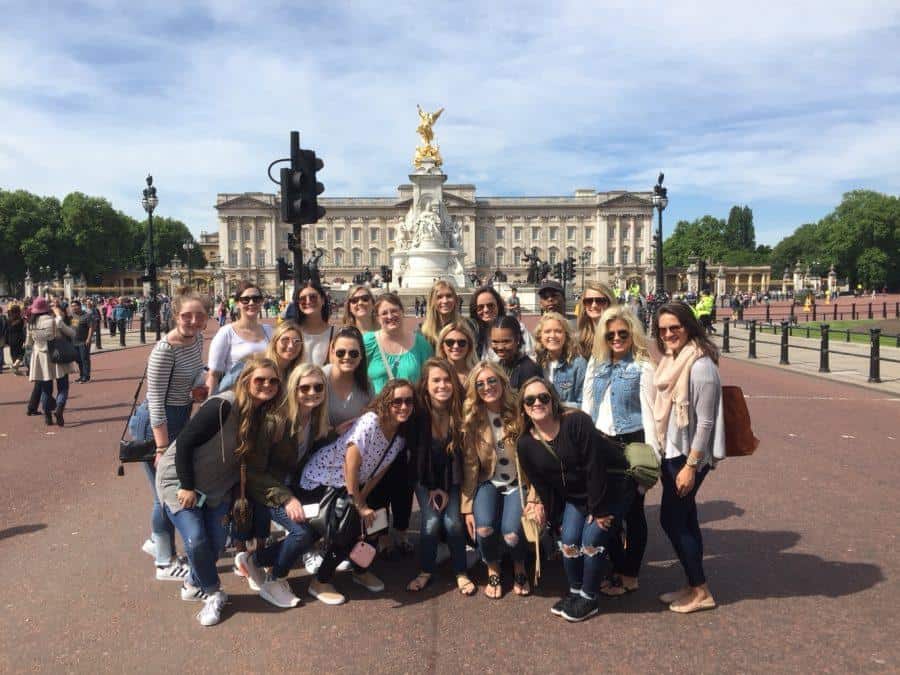By Will Baggett | Staff Reporter
A stroll alongside the Seine, a glass of wine on the Amalfi Coast or a Guiness straight from an Irish draft: The perks of getting to live abroad in another country are seemingly endless to college students looking for an adventure in a land they’ve never known. But what does it cost to live in another country on a daily basis for a several months, or longer?
The cost of living in the United States is different from that of other countries, and students studying abroad have the opportunity to experience that firsthand. Students are dropped into unfamiliar surroundings and spend months getting to step into the shoes of another country’s population as they live on their own.
Olivia Boswell, a senior majoring in apparel design and minoring in photography and digital media, was able to utilize her UA scholarship to pay for a portion of her study abroad. She studied in Florence, Italy in the fall of 2016 and described a once-in-a-lifetime experience that gave her insight into Europe’s culture and also provided her with professional experience in her field.
“Because I studied abroad during the fall semester, my UA tuition scholarship covered about ninety percent of the program fee to study abroad,” Boswell said. “This program fee included tuition and housing in Florence. However, there are a lot of hidden fees that come out of pocket before you even arrive that people don’t think about like visas, application fees, study abroad supply fees, permits to stay, flights, and fees at UA to hold your enrollment.”
“Semester at Sea,” is a study abroad program that allows students to sail between countries, therefore experiencing a plethora of cultures. Emily Bradley, a senior double majoring in communication studies and public relations, completed the program and visited Greece, Italy, Spain, Morocco, Senegal, Brazil, Trinidad and Tobago, Peru, Ecuador and Costa Rica. Bradley stayed about five days in each country, while spending the rest of the time sailing.
Bradley’s study abroad program was different than many because she stayed on a ship that was going to each of the different countries, where meals were included, even on some days while in port. However, the costs of experiencing each country she visited made themselves present with each stop.
“Whatever you think you’re going to spend, tack on a little more because there are going to be surprise, unavoidable costs every so often,” Bradley said. “The big ones of those costs you don’t typically think about are public transit in any city. Walking for the most part is doable, but more often than you’d think you’ll need to buy a bus or subway ticket in order to do everything you want to do within a given time frame.”
Junior Adrian Wiggins, a double major in chemical engineering and geology, spent a semester abroad studying in Dublin, Ireland. Wiggins was in a direct enrollment program and used his scholarships to pay for tuition and housing in Dublin. Tuition is far cheaper there than at Alabama, therefore Wiggins was able to pay for all of his tuition, as well as his housing, by using his scholarships from back in the states.
Similar to the other students studying abroad, the main expense for Wiggins was food and travel. He expressed how he adapted his day-to-day schedule to meet these costs, like, purchasing a bus card that he could refill and use to commute from housing to class or into town. Wiggins also explained how he was able to save a good bit of money by cooking his own meals from time to time.
“I cooked plenty of my own meals there, and the cost of groceries and fresh produce were cheaper than in the states,” Wiggins said. “For example, it was four dollars for two pounds of ground beef.”
While the cost of paying tuition at the University College of Dublin was high, Wiggins was able to save a decent amount of money here and there by buying his bus pass, cooking his meals, and using UA scholarship money. With this saved money, he was able to go on trips with friends he met through the program and enjoy the experience of living in another country.
For many students studying in the United States from other countries, American expenses vary depending on where they’re from.
“Prices in Brazil and Peru were typically about a third of the cost of the same item or experience in the US, and even less in Costa Rica,” Bradley said. “That being said, European students may be thrilled that things are a bit cheaper, but South or Central American students may be in for a shock when they get here.”
Similar to the differences in cost of living throughout the rest of the world, the cost of living in different regions of the United States is greatly differing. Someone studying in New York City or Washington D.C. would incur different costs than someone that might be studying in San Fransisco or Los Angeles.
While the cost of studying abroad can be a financial burden, many students feel that the value far outweighs the cost. The chance to live and study in another culture is an experience unlike any other.
“For me, studying abroad wasn’t vastly more expensive than being at Alabama for the semester,” Boswell said. “I wasn’t paying rent for an apartment here, so I was able to spend that all on personal weekend trips. Overall, you can be frugal traveling and still have a great time, but don’t be afraid to spend a little extra sometimes because it truly is a once in a lifetime experience.”







